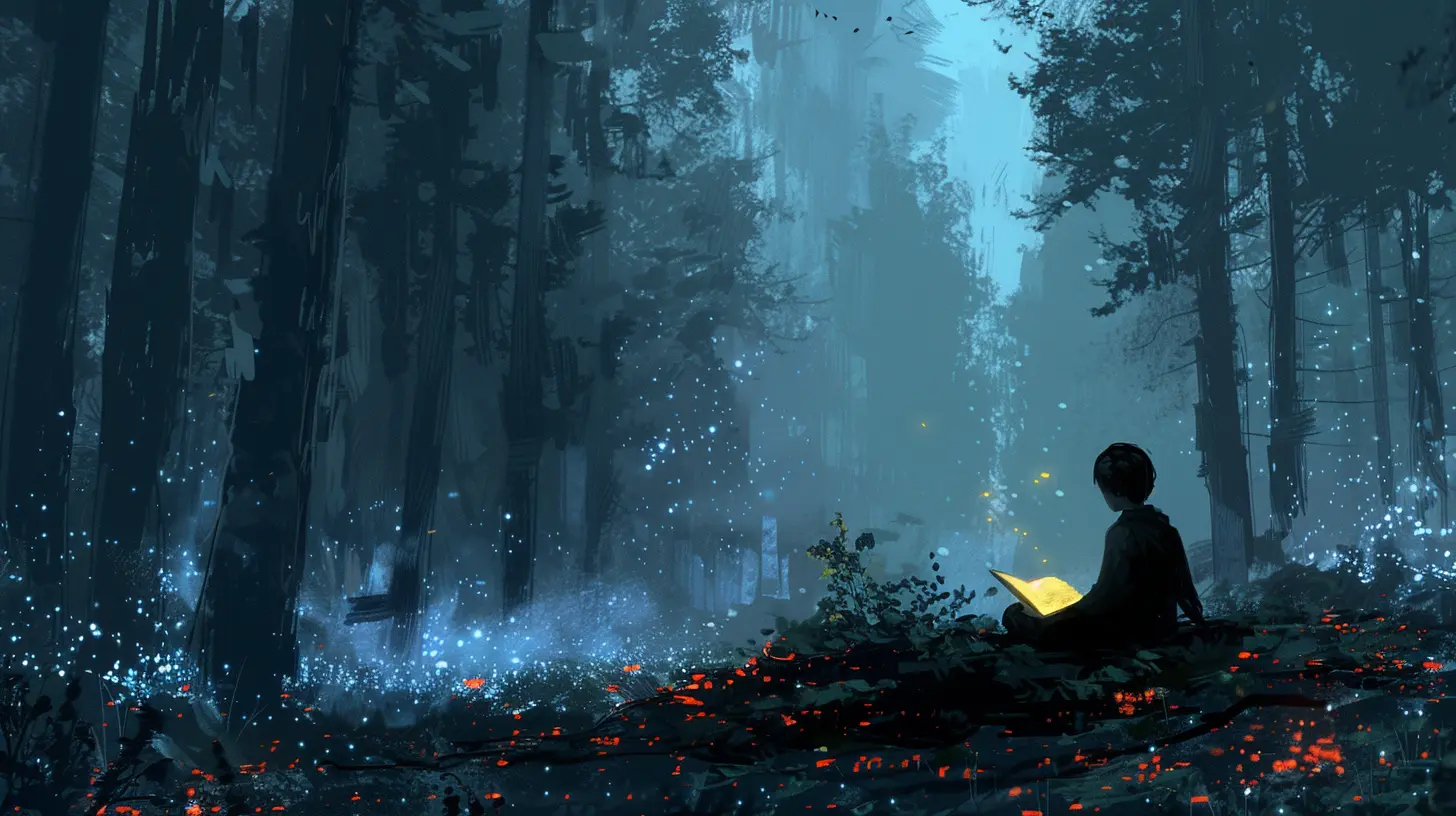The Art of Storytelling: How Personal Narratives Can Help Fund Your Game
28 July 2025
Storytelling is the oldest form of communication we know. Cavemen etched scenes on walls. Grandparents still pass down traditions through tales. And in today's digital world, storytelling has gone beyond fireside chats—it's now a superpower for indie game developers, especially when it comes to funding your dream game.
Believe it or not, the way you tell your story could be the make-or-break moment between a fully funded Kickstarter and a lonely campaign with tumbleweeds rolling through the comment section.
So, let’s dive into this fascinating world of using personal narratives to get people not just interested in your game, but emotionally invested in making it come to life.
Why Storytelling Matters More Than Ever in Game Funding
Let’s face it: the indie game space is crowded. Like, "packed subway at rush hour" kind of crowded. Every day, new projects hit platforms like Kickstarter, GoFundMe, Itch.io, and Patreon. You might have the next big hit tucked away in your hard drive, but without a compelling story, it can easily get lost in the noise.People back people. Not just products.
Your game isn't just a game—it's your game. When you inject your personal journey into your pitch, you give folks a reason to care. When backers feel something for your story—your struggles, your mission, your dreams—they’re more likely to open their wallets and spread the word.
What Makes Personal Storytelling So Powerful?
It Builds Instant Trust
Think about it. Would you rather fund a faceless company or someone who opens up about their passion, their sleepless nights, and their why? Personal narratives break down walls. They put a face to the project. And that face? It’s someone worth rooting for.It Creates Emotional Connections
Games are art. They stir up emotions, tell stories, and ignite imaginations. When you weave your personal narrative into your pitch, you're mirroring that emotional power. People don’t just support because it's "a cool game”—they support because it feels personal.It Differentiates You From the Crowd
Everyone else is pitching gameplay mechanics, graphics, and stretch goals. But you? You’re telling your journey. Your story becomes your brand. And in a sea of sameness, that makes you unforgettable.
Building Your Narrative: What Should You Talk About?
Okay, so now you're thinking, “Sounds great, but what the heck do I actually say?”Here are the story elements that really click with audiences:
1. Your Why
Why are you making this game? Was it inspired by your childhood? A personal experience? A dream you've had since you were 12? Don’t be shy—this is your hook. Share your motive like you're talking to a friend over coffee.Example:
> "I've been obsessed with space exploration since I watched old VHS tapes of Star Trek with my dad. This game's my love letter to that wide-eyed wonder I felt as a kid."
2. Your Struggles
This is where vulnerability shines. Talk about the late nights, the jobs you juggled, the rejections you faced, or the fears you had while chasing your gamedev dream. People respect the hustle.Example:
> "Truth is, this project was almost scrapped six months ago. I poured my savings into it, maxed out my skills, and nearly gave up. But something inside told me it was worth fighting for."
3. Your Vision
Where is this game going? What kind of experience are you trying to create for players? When you show passion and clarity, people catch the vision with you.Example:
> "I want players to feel seen. To laugh, to cry, to feel like the hero of their own journey—because that’s what games did for me, growing up."
Where to Share Your Story
Once you’ve crafted your personal narrative, the next step is sharing it where your audience hangs out.Crowdfunding Platforms (Kickstarter, Indiegogo)
Make your “About” section count. This isn’t just a bio—it’s your origin story. Pair your narrative with raw, behind-the-scenes content and make your video personal. Talk directly to the viewer. Eye contact is powerful—even in video.Social Media (Twitter, TikTok, Instagram)
Use short, punchy bits of your story as content. Break down your journey into relatable micro-stories: your first sketch, your first bug, your biggest “aha” moment. Social media thrives on authenticity.Devlogs, Blogs & Newsletters
Write blog posts that aren't just updates—they're chapters in your journey. Instead of just saying “we fixed a bug,” say “I spent 4 hours straight chasing a bug that turned out to be a missing semicolon. Send coffee.”Livestreams & Podcasts
People love behind-the-scenes content. Going live on Twitch or joining an indie game podcast gives you room to be genuine and unscripted. That’s where stories really shine.Examples of Devs Who Nailed It
Stardew Valley – Eric Barone
When Stardew Valley launched, it wasn’t just about farming. Eric Barone (aka ConcernedApe) built an entire narrative around being a one-man dev army. He was open about doing everything himself—art, music, code—for years. That story alone sparked curiosity and admiration.The result? One of the most successful indie games of all time.
Celeste – Matt Makes Games
Celeste isn’t just a platformer—it’s a metaphor for overcoming mental health struggles. And when the dev team shared that the game echoed their own struggles, it resonated deeply with players. The honesty in their story helped elevate the game into a heartfelt experience that won awards and changed lives.Don't Just Tell Your Story—Show It
Ever heard the phrase “Show, don’t tell”?Yeah, that’s gold here too.
Instead of just saying, “I’m passionate about game development,” show it:
- Post messy sketches from day one
- Share photos from your workspace (yes, clutter and all)
- Record short diary-style devlogs with real talk
These details make your story feel alive. Raw. Genuine. And in a world full of polished pitches, raw wins.
Crafting a Story-Driven Funding Page: A Quick Guide
Let’s get practical. When you're creating your game’s funding page, here’s a solid structure built around personal storytelling:1. Start with a hook
Grab attention in the first 2 sentences. Use emotion, surprise, or a juicy tidbit about your journey.> "I spent 2 years building this entire game in a 300-square-foot apartment with my cat as my only tester."
2. Introduce yourself
Say who you are, what you do, and how you got here. Keep it short, but meaningful.> "Hey, I’m Alex—a self-taught dev who started out modding games in high school. This is my debut project and I'm beyond excited (and terrified)."
3. Talk about the game
Now that they know you, tell them about the game. What it is, how it plays, and what makes it special. Tie this back into your personal story as much as possible.4. Share your struggles and dedication
This builds credibility and relatability. People love underdog stories.5. Show your dream
Paint a picture of the future—what happens if the game gets funded? What can you do with that support?6. Make the ask personal
Ask for support like you’re asking a friend, not a customer. The tone makes all the difference.Tips To Make Your Personal Narrative More Compelling
- Be honest – Authenticity always trumps perfection.- Use visuals – Photos, quick videos, even childhood drawings related to your story.
- Avoid jargon – Your grandma should be able to understand your story.
- Add humor or emotion – People remember feelings more than facts.
- Keep it conversational – Imagine you’re talking to one person, not an audience of thousands.
But…What If You’re Not Comfortable Sharing Personal Stuff?
Good question.You don’t need to spill your soul. But you do need to be real. Find the parts of your story you are comfortable sharing and build around those. Even something as simple as “I’ve always dreamed of players connecting through my games the way I used to connect with my brothers growing up” can be powerful.
And remember: vulnerability isn’t weakness—it’s a secret weapon.
Personal Storytelling Goes Beyond Funding
Here’s the kicker: The magic doesn’t stop once the campaign ends. A personal narrative helps you build a loyal community, attract publishers, and stand out to journalists and influencers.When people know (and like) your story, they become invested in your journey. Not just the game.
Final Thoughts: Make Your Story Feel Human
In the end, it all comes down to this:People don't back projects. They back people.
Your story is your soulprint. It's what sets your game apart in a market that’s brimming with talent but often lacking heart. When you share your journey with honesty, passion, and just the right amount of vulnerability, you do more than get funded—you build a fearless, meaningful connection with your audience.
So go ahead. Tell your story. Someone out there is waiting to hear it—and fund it.
all images in this post were generated using AI tools
Category:
CrowdfundingAuthor:

Greyson McVeigh
Discussion
rate this article
1 comments
Elin McElhinney
This article insightfully underscores the power of personal narratives in game funding, highlighting how authentic stories resonate with audiences and drive financial support effectively.
August 28, 2025 at 3:20 AM

Greyson McVeigh
Thank you! I'm glad you found the article insightful. Personal narratives truly can create a powerful connection with audiences and enhance funding opportunities.


